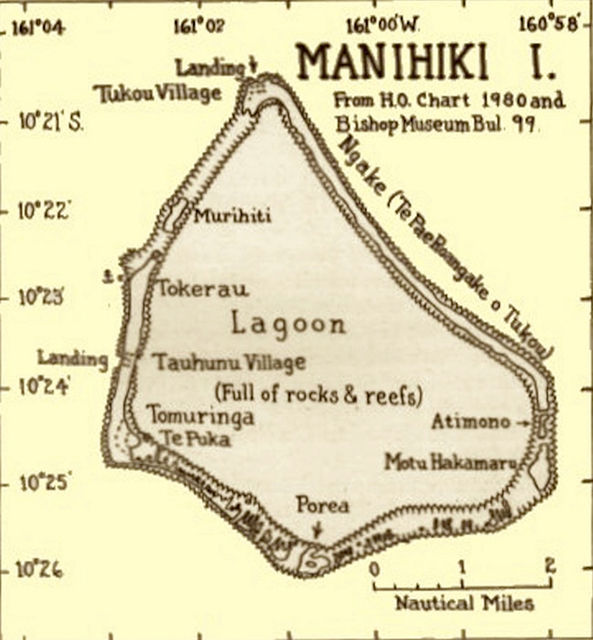According to an article published in Honolulu’s “Polynesian” newspaper on Jan. 21, 1860, Captain Sinclair of the American schooner, “Wamp,” had recently recruited four men and six women at Manihiki Atoll in the Cook Islands — also known as Humphrey’s
According to an article published in Honolulu’s “Polynesian” newspaper on Jan. 21, 1860, Captain Sinclair of the American schooner, “Wamp,” had recently recruited four men and six women at Manihiki Atoll in the Cook Islands — also known as Humphrey’s Island — and had shipped them to Koloa Plantation, Kauai, for a period of five years labor.
All of the immigrants were young and healthy and seemed to be in good spirits.
One of them had picked up some English and all were able to communicate with Hawaiians at Koloa, since their languages are somewhat similar, and since the Hawaiians were particularly interested in getting to know them.
Captain Sinclair stated that the recruits wanted to leave Manihiki, and added that all of the residents would have left if given the opportunity, because of a scarcity of food on the atoll.
The article further reported that the “Wamp” was taking on supplies and would sail again in a few days for another cargo of perhaps 25 to 30 labor recruits for Koloa Plantation.
Then, in the July 12, 1860, edition of the “Polynesian,” a second article was published that contradicted the original by revealing that the Manihiki islanders had actually been kidnapped:
“From Fanning’s Island — We have received an interesting report from Capt. Keyte, which will be found under the marine news. It appears from this that the schooner ‘Wamp’ which figured in the papers some months since, was little else than a piratical craft.
“The captain landed at Christmas Island, destroyed a structure erected there by the United States Guano Co., and took the lumber away and sold it.
“The ‘Wamp’ then managed to kidnap a cargo of natives from Humphrey’s Island, which were landed at Kauai. The natives of that island had been mourning the loss of their relatives and friends, and anxiously asked if there was no way by which they could be returned to them.”
The eventual fate of Koloa Plantation’s Manihiki islanders was not reported.



